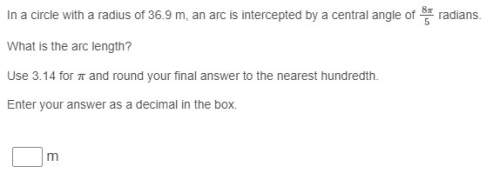
Mathematics, 24.02.2021 22:10 isabellemaine
Part A
The first part of Ray and Kelsey's roller coaster is a curved pattern that can be represented by a polynomial function.
Ray and Kelsey are working to graph a third-degree polynomial function that represents the first pattern in the coaster plan. Ray says the third-degree polynomial has four intercepts. Kelsey argues the function can have as many as three zeros only. Is there a way for the both of them to be correct? Explain your answer.
Kelsey has a list of possible functions. Pick one of the g(x) functions below and then describe to Kelsey the key features of g(x), including the end behavior, y-intercept, and zeros.
g(x) = (x + 2)(x − 1)(x − 2)
g(x) = (x + 3)(x + 2)(x − 3)
g(x) = (x + 2)(x − 2)(x − 3)
g(x) = (x + 5)(x + 2)(x − 5)
g(x) = (x + 7)(x + 1)(x − 1)
Create a graph of the polynomial function you selected from Question 2.

Answers: 2


Another question on Mathematics

Mathematics, 21.06.2019 20:00
How can you construct perpendicular lines and prove theorems about perpendicular lines
Answers: 3


Mathematics, 21.06.2019 21:30
The table shows the number of students who signed up for different after school activities. activity students cooking 9 chess 4 photography 8 robotics 11 select the true statements about the information in the table.
Answers: 2

Mathematics, 21.06.2019 23:00
Describe the end behavior of the function below. f(x)=(2/3)^x-2 a. as x increases, f(x) approaches infinity. b. as x decreases, f(x) approaches 2. c. as x increases, f(x) approaches -2. d. as x decreases, f(x) approaches negative infinity.
Answers: 1
You know the right answer?
Part A
The first part of Ray and Kelsey's roller coaster is a curved pattern that can be represente...
Questions


History, 02.07.2019 10:20





Physics, 02.07.2019 10:20



Advanced Placement (AP), 02.07.2019 10:20



Biology, 02.07.2019 10:20


History, 02.07.2019 10:20


English, 02.07.2019 10:20



History, 02.07.2019 10:20




